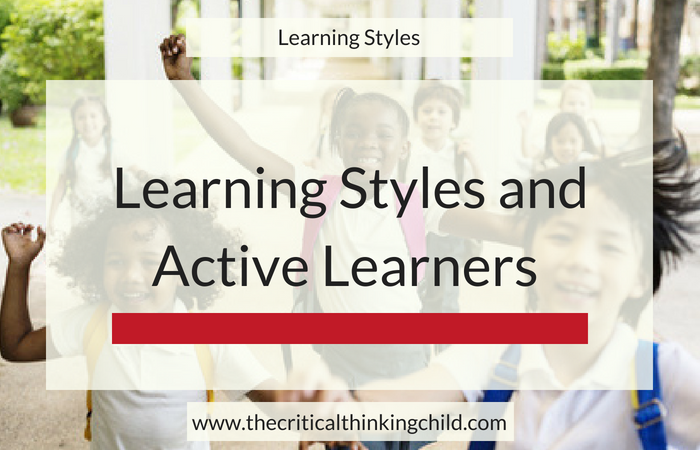Many children are active learners. Knowing your child’s learning style can go a long way toward helping them develop critical thinking skills. By playing to their strengths, your child can gain an edge in school – whether they’re trying to excel within their gifted program or preparing for a high stakes test.
After years of working with gifted and talented children, I’ve broken learning styles down into categories that reflect how your child reacts to their world. These categories are literary, active, analytical, and creative.
This post is the second in a series that provides an in-depth look at each learning preference and will focus on active learners (for an overview of all the learning styles, click here).
What is an active learner?
Active learners, also known as kinesthetic learners, are always in motion. They love drama and can often be found “playing school” or “playing house.” They are socially aware and adept from a young age and enjoy being in groups. Active learners are always willing to have a discussion or argument and enjoy debating with others. They learn best when they are actively involved rather than reading material or listening to a lecture.
Strengths of active learners
As the name implies, active learners like to move. They work well in group and team environments, and have the potential to be interesting, engaging leaders since they are always on the go. Even if they are not in leadership positions, active learners tend to be great friends and teammates. Since they enjoy discussion, they are easily able to take others’ perspective and consider issues from multiple sides, which can set them up for a variety of career paths later in life.
Active learners are often (but not always) athletic and tend to excel at activities that involve hand-eye coordination like dancing or basketball. They have good muscle memory, which means their bodies are able to remember something after only doing it once or twice (think driving or riding a bike) and have lots of energy. Active learners are often unafraid to fail and are eager to experiment with new ways of doing things.
Challenges faced by active learners
Since active learners tend to learn so well in groups, they may struggle with individual work. When possible, they prefer to bounce ideas off of others and discuss problems.
Depending on the physical energy level of your active learners, they might also get in trouble at school for being out of their seats or talking when they are not supposed to. Because they do best when they are actively involved, they may appear to have a shorter attention span than some of the other learning styles (like literary learners).
Once active learners learn self-control and the appropriate places to talk and use their active strengths, they are great assets to classrooms and schools.
How to help active learners at home
Active learners are best at learning by doing. With this in mind, you can come up with a number of fun activities at home that tap into their critical thinking skills.
For example, you can:
- Engage their curiosity by creating hands-on science experiments that they must figure out.
- Give them the job of an author or illustrator and have them actively create a product.
- Combine their ability to work well with others with their active personalities through puppet shows and plays.
- Spice up simple activities, like singing songs, by incorporating dance moves or hand gestures.
When coming up with activities for your active child think production rather than consumption: the more active learners can be working towards an end result, the more engaged they will be and the more they will learn.
Avoid lecture and “talking at” active learners as much as possible; they will disengage and potentially have behavior issues. When lectures and reading are unavoidable, make it as active as possible. For example, you could have a fidget ball on hand to squeeze while listening to a lecture, let active learners stand up and walk around if possible, or provide a highlighter and note-taking pages to actively process new reading material.
Active learners are great leaders who bring lots of energy and strong social skills to the table. Make sure they are actively engaged as much as possible and enjoy watching your active learner grow!



